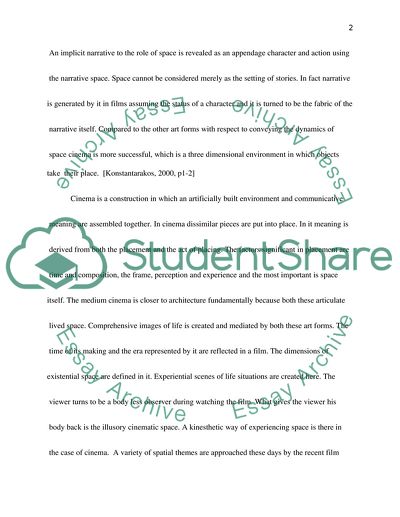Cite this document
(“An Analysis of Space and Place in Cinema Essay Example | Topics and Well Written Essays - 4500 words”, n.d.)
Retrieved from https://studentshare.org/visual-arts-film-studies/1577134-an-analysis-of-space-and-place-in-cinema
Retrieved from https://studentshare.org/visual-arts-film-studies/1577134-an-analysis-of-space-and-place-in-cinema
(An Analysis of Space and Place in Cinema Essay Example | Topics and Well Written Essays - 4500 Words)
https://studentshare.org/visual-arts-film-studies/1577134-an-analysis-of-space-and-place-in-cinema.
https://studentshare.org/visual-arts-film-studies/1577134-an-analysis-of-space-and-place-in-cinema.
“An Analysis of Space and Place in Cinema Essay Example | Topics and Well Written Essays - 4500 Words”, n.d. https://studentshare.org/visual-arts-film-studies/1577134-an-analysis-of-space-and-place-in-cinema.


